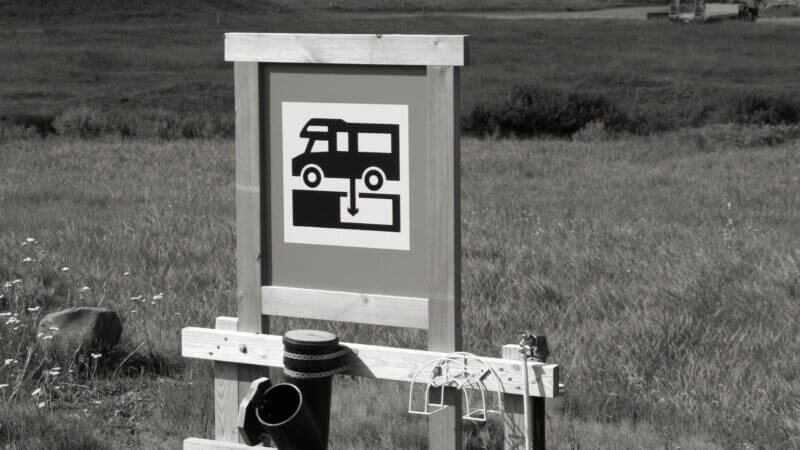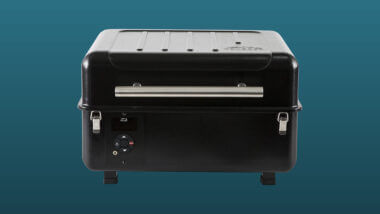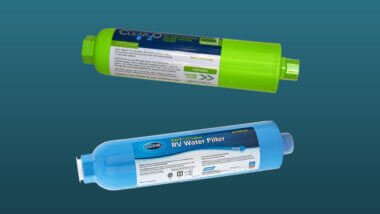Table of Contents Show
An RV’s black tank plays a major role in making a vehicle feel like a home. The black water tank helps you deal with waste when you’re on the road. Let’s learn more.
What is an RV Black Water Tank?
Most RVs have two wastewater holding tanks: the gray water tank and the black water tank. The gray water tank holds water that came from the shower and sinks.
The RV black water tank holds water and waste flushed from the toilet. “Black water” is the RV term for sewage. The black water tank sits under the RV, typically right under the bathroom and toilet area and near the RV gray water tank.
How the Black Water Tank Works
The black water tank collects liquids, solids, and toilet paper. This holding tank is gravity-fed and requires special care to keep it free of clogs and functioning properly.
It’s emptied just like the gray water tank. Typically, you’ll find the emptying tank in the same place for both the gray and black tanks. They also share a hose for dumping.
Since the black water tank holds both liquids and solids, it requires different care than your gray water tank. For example, RVers should use a lot of water with each flush to prevent build-up or clogs in the RV black water tank. RVers can use biodegradable enzymatic additives like Happy Camper to help with odor and breaking down waste.
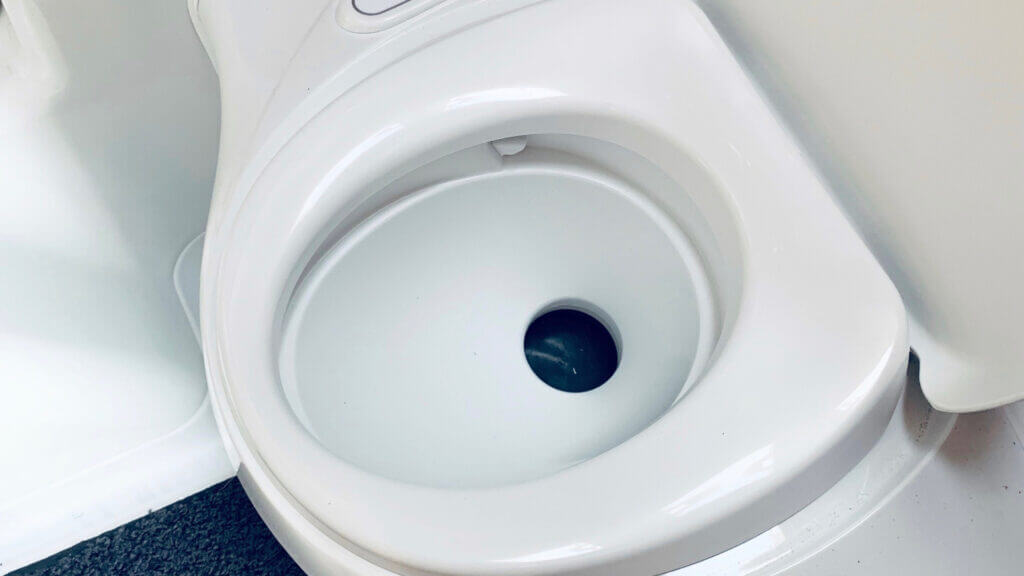
How Many Gallons Does an RV Black Water Tank Hold?
RVs come in all shapes and sizes, and so do their black water tanks. Some don’t even have one at all. Smaller RVs that don’t have a bathroom or toilet also won’t have a tank specifically for that. Also, some RVs and campervans use cassette toilets, which eliminates the need for a black tank.
RV black tanks range in capacity from 10 gallons to 60 or more. They’re usually the smallest tanks on your rig, with the gray and freshwater tanks both holding more capacity. The black water tank typically doesn’t fill as fast as the gray water tank, so the smaller holding capacity makes sense.
How Often Should You Dump a Black Water Tank?
You should dump your tank when it’s about two-thirds full. However, you should always dump before putting your RV in storage, no matter how full it is. Emptying your tank before it fills all the way can help prevent build-up and clogs.
Always be sure that there’s plenty of liquid in your black tank. You should also fill the toilet bowl each time you flush. This will help break down waste and prevent build-up. Beyond clogs, the build-up can also damage the sensors that tell you your tank levels.
How to Clean and Flush a Black Water Tank
When dumping your RV black tank, be sure that your RV sewer hose is securely attached to both your RV and the sewer hookup in the ground. If it’s not snug, it may pop out during the process of dumping and cause a mess. You should always dump your black tank before your gray water because the gray water will help clean out your RV hose after dumping.
Once you have your sewer hose securely connected, pull the black tank gate valve and wait for wastewater to stop flowing. Then you can move on to cleaning and flushing the tank.
The key to knowing when your black tank is clean is using a clear sewer hose elbow attachment. Seeing the color of the water and the amount of solid waste coming out of the tank is the only way you’ll know for sure it’s clean.
Many newer RVs have a flushing system for the black and gray tanks that fills the tanks with clean water to rinse them out. However, if you don’t have a black tank flush, you’ll need a different method.
You can purchase a clear sewer hose attachment with a backflush water hose hookup. Or you can run a hose through a window and fill your black tank through the toilet directly. You may have to flush your black tank more than once to be sure it’s free of debris.
- Efficient Cleaning Tool: The Dual Flush keeps your RV septic system functional, efficient, and free of odors! Keep your...
- Powerful Spraying Action: With two-way jet cleaning action, the Dual Flush creates a powerful spray that helps reduce...
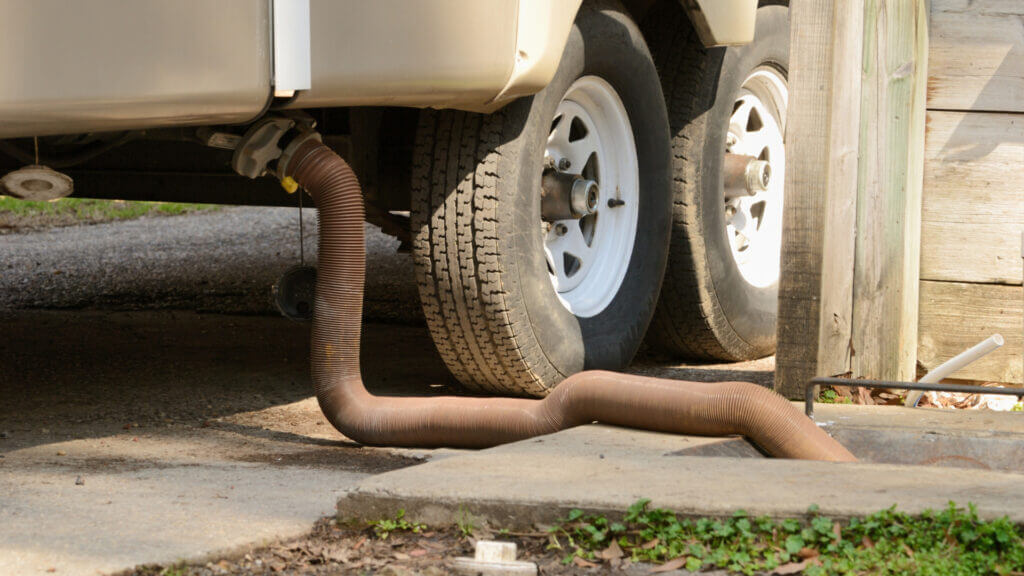
Do All RVs Have Black Water Tanks?
Not all RVs have black tanks. If an RV doesn’t have a toilet, it doesn’t need a black tank. Some smaller RVs and campervans also use cassette toilets, which hold their own waste. If an RV has a cassette toilet, it won’t have a black tank as well.
RV Black Water Tank Tips
Your RV black tank is a pretty important piece of equipment. If it’s not properly cared for, you can have a smelly mess on your hands. Here are some tips for keeping your RV black tank working well.
Never Leave Open While Hooked Up
Never leave your black tank valve open while hooked up to the sewer at a campground. While you can leave your gray tank valve open, you should only ever open your black tank valve when it’s time to dump. If you leave your black tank open while hooked up to a sewer connection, all the liquids will drain out, but the solids will pile up, causing a major clog.
Flush and Clean as Often as Possible
If possible, you should flush your black tank every time you dump it. There will be times when it’s not appropriate to flush your black tank, like if you’re in a rush or have a long line behind you at the dump station.
But if you have full hookups at your campsite and plenty of time, you should flush your tank every time you dump. This will help keep your tank clean and prevent build-up that can damage your tank level sensors.
Pro Tip: You don’t need to use expensive RV toilet paper. Check out these RV Toilet Paper Alternatives You’ll Wish You Used Sooner.
Use Black Tank Additives for Odor Control
Using biodegradable additives in your RV black water tank will help with odor control. And they’ll also help with waste breakdown, which reduces your risk of build-up and clogs.
There are many additives on the market today. Be sure to look for “septic safe” and “biodegradable” additives, as chemical additives can damage campground and RV park septic tanks.
The RV black water tank is an important component of a self-contained RV. When properly cared for, an RV black tank will function properly for many years. Regular use, cleaning, and maintenance are all essential steps in caring for your black tank. Do you have any “black tank horror stories?”
Last update on 2025-01-18 / Affiliate links / Images from Amazon Product Advertising API




